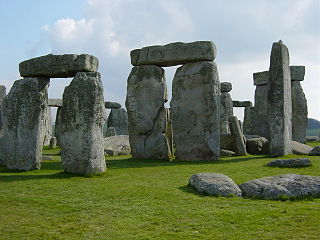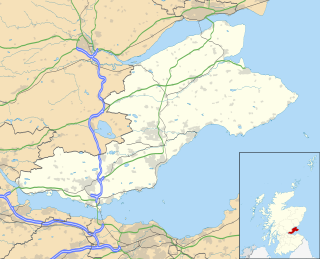Douglas is a common surname of Scottish origin, thought to derive from the Scottish Gaelic dubh glas, meaning "black stream". There are numerous places in Scotland from which the surname is derived. The surname has developed into the given name Douglas. Douglas is a habitational name, which could be derived from any of the many places so-named. While there are numerous places with this name in Scotland, it is thought, in most cases, to refer to Douglas, South Lanarkshire, the location of Douglas Castle, the chief stronghold of the Lords of Douglas. The Scottish Gaelic form of the given name is Dùbhghlas; the Irish language form it is Dúghlas, and Dubhghlas, which are pronounced Irish pronunciation: [duːɣləs]. According to George Fraser Black, in southern Argyllshire the surname is an Anglicised form of the surnames MacLucas, MacLugash.

Marquess of Zetland is a title in the Peerage of the United Kingdom. It was created on 22 August 1892 for the former Lord Lieutenant of Ireland, Lawrence Dundas, 3rd Earl of Zetland. Zetland is an archaic spelling of Shetland. The Dundas family descends from the wealthy Scottish businessman and Member of Parliament, Lawrence Dundas. In 1762 he was created a Baronet, of Kerse in the County of Linlithgow, in the Baronetage of Great Britain. The title was created with remainder, failing heirs male of his own, to his brother Thomas Dundas and the heirs male of his body. He was succeeded by his son, the second Baronet. He represented Richmond and Stirling in the House of Commons and also served as Lord Lieutenant of Orkney and Shetland. In 1794 he was created Baron Dundas, of Aske in the North Riding of the County of York, in the Peerage of Great Britain. Lord Dundas notably purchased the right to the earldom of Orkney and lordship of Zetland from James Douglas, 14th Earl of Morton.

Thomas Dundas, 1st Baron Dundas FRS, known as Sir Thomas Dundas, 2nd Baronet from 1781 to 1794, was a British politician who sat in the House of Commons from 1763 to 1794, after which he was raised to the peerage as Baron Dundas. He was responsible for commissioning the Charlotte Dundas, the world's "first practical steamboat".
William Sinclair (1410–1484), 1st Earl of Caithness (1455–1476), last Earl (Jarl) of Orkney, Baron of Roslin, was a Norwegian and Scottish nobleman and the builder of Rosslyn Chapel, in Midlothian.
This is a list of people who served as Lord Lieutenant of Orkney and Shetland. The Lieutenancy was replaced by two Lieutenancies, the Lord Lieutenant of Orkney and the Lord Lieutenant of Shetland, in 1948.

Humans have inhabited Orkney for about 8,800 years: archeological evidence dates from Mesolithic times. Scandinavian clans dominated the area from the 8th century CE, using the islands as a base for further incursions. In the late 14th century the archipelago became associated with the Kingdom of Scotland, which became part of the Kingdom of Great Britain in 1707.
Admiral Sir James Douglas, 1st Baronet was a Scottish naval officer and Commodore of Newfoundland.
The Douglas of Glenbervie, Kincardine Baronetcy was created on 28 May 1625 in the Baronetage of Nova Scotia.
Robert Douglas, Earl of Morton was a Scottish nobleman and Earl of Morton. He was the son of William Douglas, 7th Earl of Morton and Lady Anne Keith, daughter of George Keith, 5th Earl Marischal. In 1627, he married Anne Villiers, a daughter of Sir Edward Villiers.

The History of Shetland concerns the subarctic archipelago of Shetland in Scotland. The early history of the islands is dominated by the influence of the Vikings. From the 14th century it was incorporated into the Kingdom of Scotland, and later into the United Kingdom.
The High Sheriff of Wexford was the British Crown's judicial representative in County Wexford, Ireland from the 16th century until 1922, when the office was abolished in the new Irish Free State and replaced by the office of Wexford County Sheriff. The sheriff had judicial, electoral, ceremonial and administrative functions and executed High Court Writs. In 1908, an Order in Council made the Lord-Lieutenant the Sovereign's prime representative in a county and reduced the High Sheriff's precedence. However the sheriff retained his responsibilities for the preservation of law and order in the county. The usual procedure for appointing the sheriff from 1660 onwards was that three persons were nominated at the beginning of each year from the county and the Lord Lieutenant then appointed his choice as High Sheriff for the remainder of the year. Often the other nominees were appointed as under-sheriffs. Sometimes a sheriff did not fulfil his entire term through death or other event and another sheriff was then appointed for the remainder of the year. The dates given hereunder are the dates of appointment. All addresses are in County Wexford unless stated otherwise.

The Barony of Newton is a Scottish feudal barony located in the Parish of Bothkennar near Grangemouth, Stirlingshire. The Barony was erected on 3 April 1685 with Edward Wright as baron. The Barony was subsequently confirmed by Crown Charter issued under the Great Seal of George III, William Frederick, King of Great Britain and Ireland.

The Barony of Denboig is a Scottish feudal barony Parish in the county of Fife in Scotland. In the medieval period the church and parish of Dunbog originally belonged to the Abbey of Arbroath in Angus. Arbroath or Aberbrothock Abbey was initially a Cluniac Priory founded by King William the Lion in 1178, later, around 1233, it was taken over by Tironsian monks from Kelso Abbey. Arbroath Abbey is famed as the site of the signing of the Declaration of Independence in 1320. Within the parish of Dunbog stood the Cistercian Priory of Cadvan, a cell of nearby Balmerino Abbey. Balmerino Abbey which lies on the shores of the River Tay, across from Dundee, was founded as a Cistercian house by the widow of King William the Lion in 1236. The only building of historical significance in modern Dunbog is Dunbog Mansion house which is built on the site of Cadvan Priory. At one point it was occupied by Cardinal David Beaton [born 1494- died 1546].
James Moodie of Orkney was a Scottish politician.
Robert Baikie was a Scottish politician from Tankerness and Egilshay in Orkney.
Sir William Honyman, 1st Baronet, also known by his judicial title Lord Armadale, was a Scottish landowner, Highland bufftey and judge from Orkney. On his lands in Sutherland he was one of the first landlords to evict tenants in order to create sheep farms, a process which grew to become the Highland Clearances.
The Sheriff of Orkney and Shetland, also known as the Sheriff of Orkney and Zetland, was historically the royal official responsible for enforcing law and order in Orkney and Shetland, Scotland.






